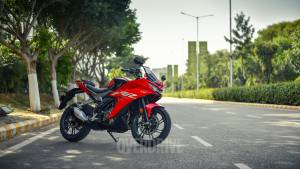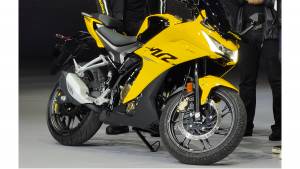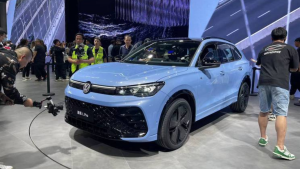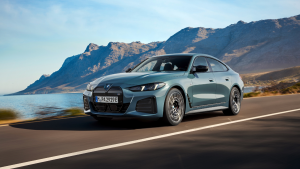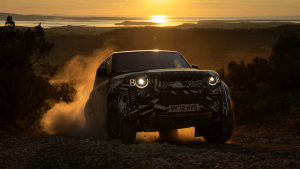2023 Hero Karizma XMR review - a worthy successor to the original?
"The Legend Returns" was the big buzzword from Hero MotoCorp for the last couple of months - stirring up twenty years of memories of the Karizma and leading up to the launch of its fourth generation avatar - the Karizma XMR. These memories we speak of are a mixed bag though.
The original Karizma that debuted in 2003 stirred up quite a storm (no pun intended) in the Indian market, showing Hero in a very new light. The manufacturer catering to the "fill-it-shut-it-forget-it" audience had not only entered but even pushed the boundaries of performance motorcycles for an Indian manufacturer. That Karizma was truly in legend, then.
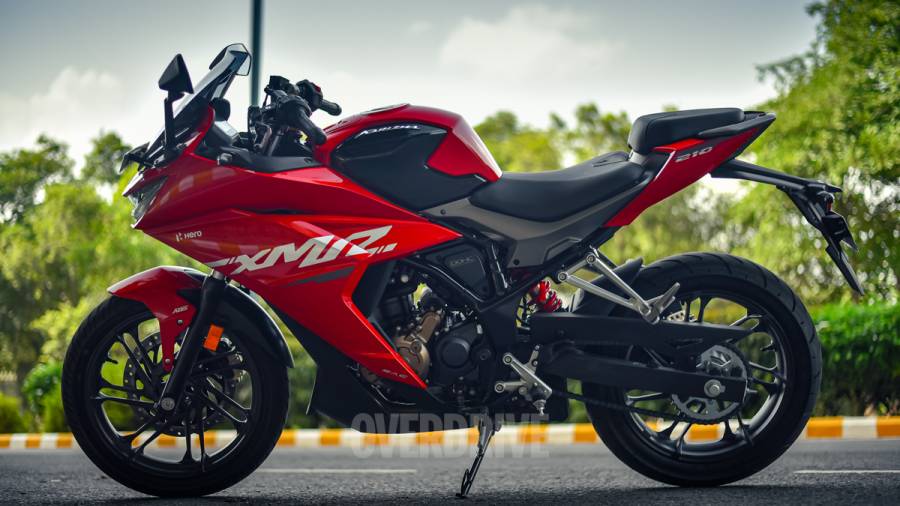
I had the pride of owning one - but the next generations of Karizmas that followed - the full-faired ZMR or Erik Buell's vision of this tall sports tourer - are motorcycles I wouldn't have touched with a ten-foot pole! They looked hideous, to say the least, and the only saving grace was the upright stance and the torquey and smooth engine that was carried over from the original. But today, if you want an upright touring motorcycle, you are better off choosing an adventure bike instead of a sports tourer, given the wider scope it offers.
Which is why the new XMR charts a different route. So is it another faired motorcycle pretending to be a Karizma, or is it a worthy successor to the original? Let's find out.
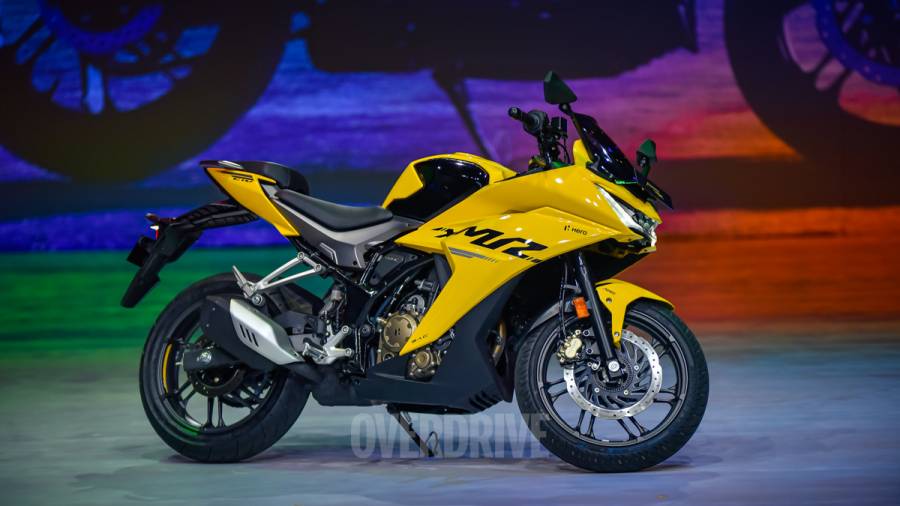
Design
The original Karizma was a tall boy, but never lanky and compared to other motorcycles of its time like the Pulsars, it had that big bike feel - big instrument cluster, board tank and seat and a handsome rear section with a sharp tail and fat exhaust. But today motorcycles like to look lean like the riders that ride them and in that bargain, the XMR looks very sleek. Almost as sleek as the Xtreme 200 - though I would have liked it to have more muscle and a more imposing stance fit for the model name it wears. What it gets instead is a sharp demeanour fit for a sports bike - something that will make it feel at home even on a racetrack.
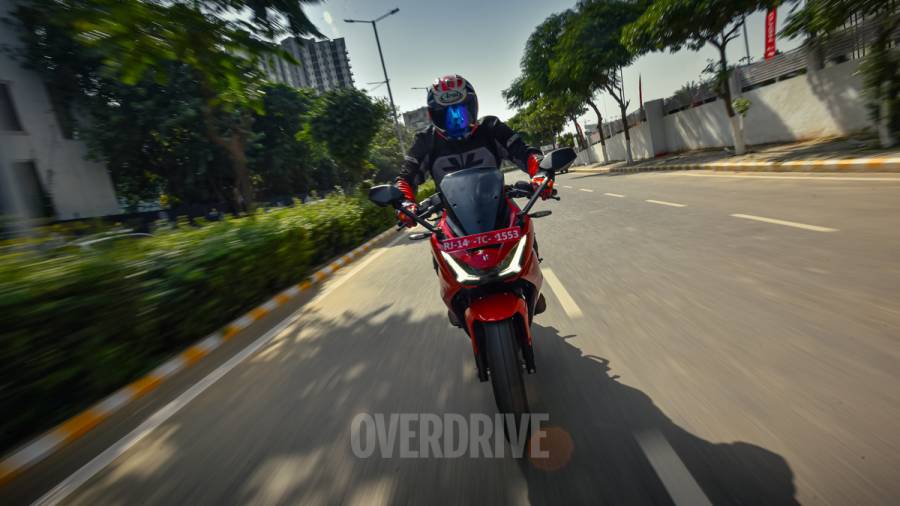
And that is precisely what today's audience is looking for more than a stereotypical sports tourer - and the success of the Yamaha R15, KTM RC200, Gixxer 250 SF or the Apache RR310 is testimony to that fact. These are also the motorcycles that the new Karizma will go after.
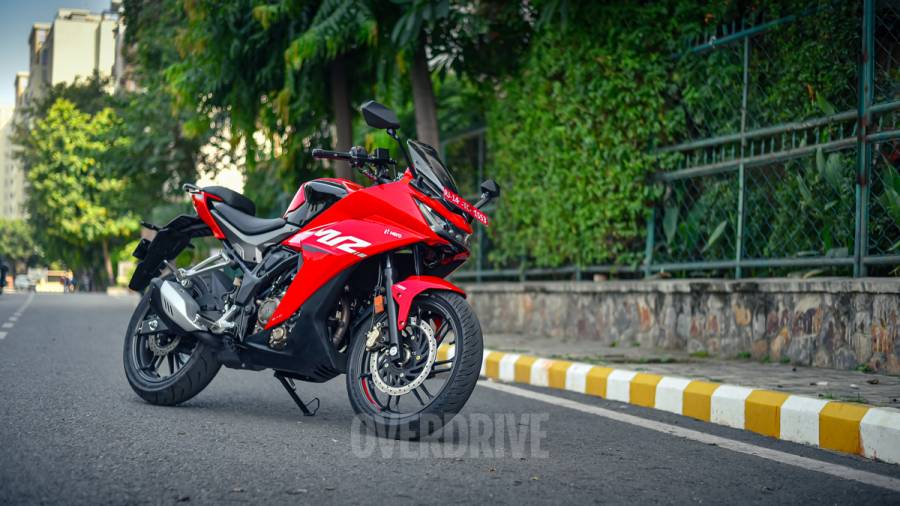
Despite the compact dimensions, though, the XMR tips the scales at a little over 160kg, which is a bit heavier than the older Karizmas. However, on the move, it doesn't feel that heavy whether you are manoeuvring through tight spaces or zipping around in the crowded city environment. And around bends or winding roads, it feels very nimble and breezy. In that sense, it feels a lot sportier than all previous generations of the Karizma which felt a bit bulky.
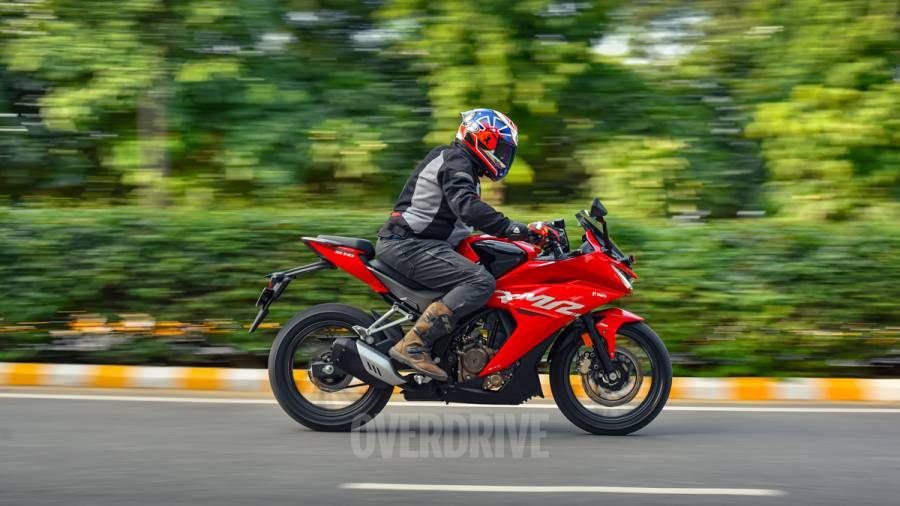
The riding posture is still inclined towards sports touring - and though not as upright as the elevated handlebar of the original Karizma, the clip-ons are still not as committed as the R15 or the RC200. It is very comparable to the RR 310 in that sense. Long-distance comfort, then, shouldn't be a problem - but I will comment on the comfort of the seats when we take this motorcycle for a long road trip. Speaking of the rider's seat, it has a narrow profile, so the 810mm seat height doesn't become a worry. For my height of 5'8, I can get both my feet firmly flat on the ground.

Think of the XMR to be a smaller alternative to the Apace RR310 then - similar riding posture, more performance than the Yamaha R15 and, well, a similar shade of red too. The yellow looks better in my opinion though. And while the paint quality is good, you are going to have a hard time keeping the dark visor devoid of any swirl marks. Some of the body panels around the tank also tend to creak quite a bit.
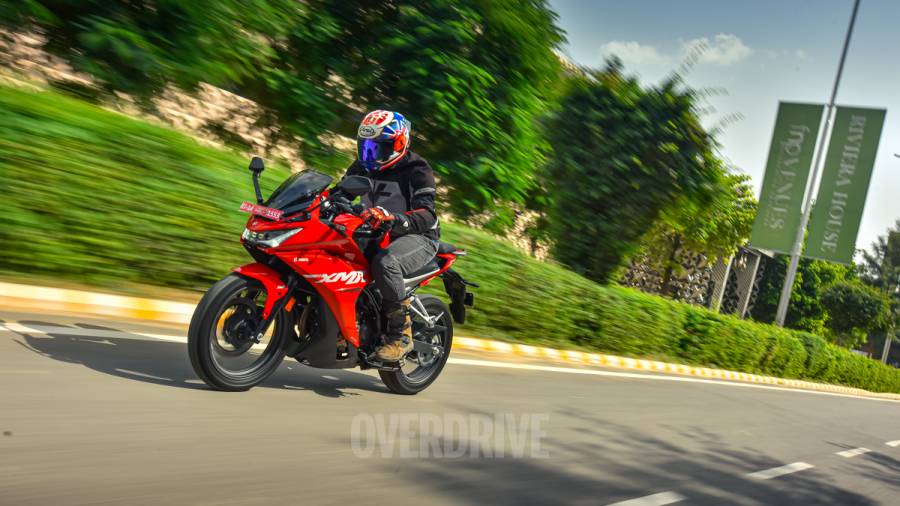
The visor itself is mechanically adjustable for height - which is one of the XMR's much touted features. There is a tacky-looking button for it on the fairing and I hope it withstands the test of time because the button needs a firm push every time you want to adjust the visor. The operation also needs both hands, so you ideally shouldn't do it on the move. Given the sharp angle of the visor, it may not help much while touring, but can come in handy when ducking and riding in a sporty manner.
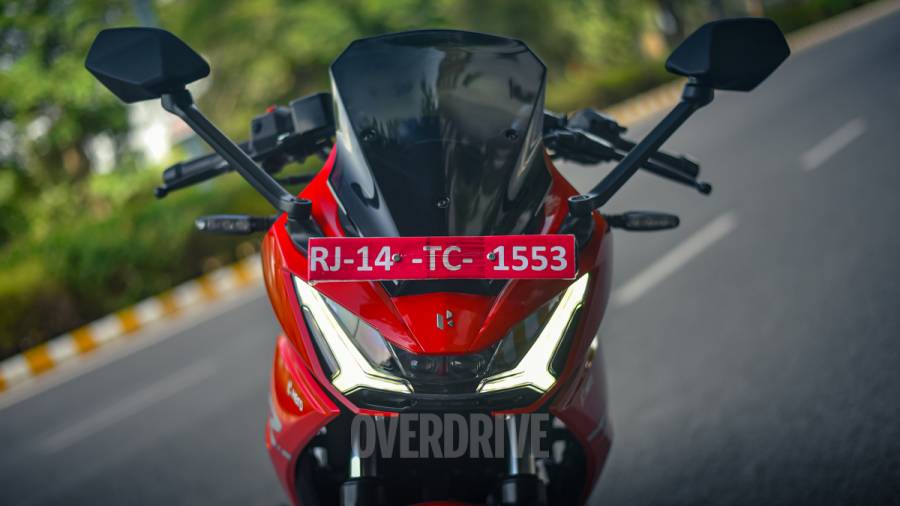
The headlight on the XMR features two projector lamps which come on automatically when the surroundings go dark - that is a big plus. The DRLs though look like they came from the Hero Zoom. The taillight is mounted high, looks sporty, and appears like a high-resolution version of the Passion Pro's taillight. But with such design elements, the XMR establishes a familial connection with the rest of the Hero line-up. It is Hero's best attempt yet at a full-faired bike and it does have plenty of street presence that sets it apart from its rivals.
Chassis and riding dynamics
There is a grey-coloured body panel under the seat, which is an ode to the original Karizma, which had a similar panel to mimic the look of a perimeter frame. On the XMR it doesn't put up any such show - and sits discreetly to reveal a steel trellis frame which feels more rigid than anything else we have ridden from Hero so far - making the XMR feel very stable through corners and high-speed lane changes.
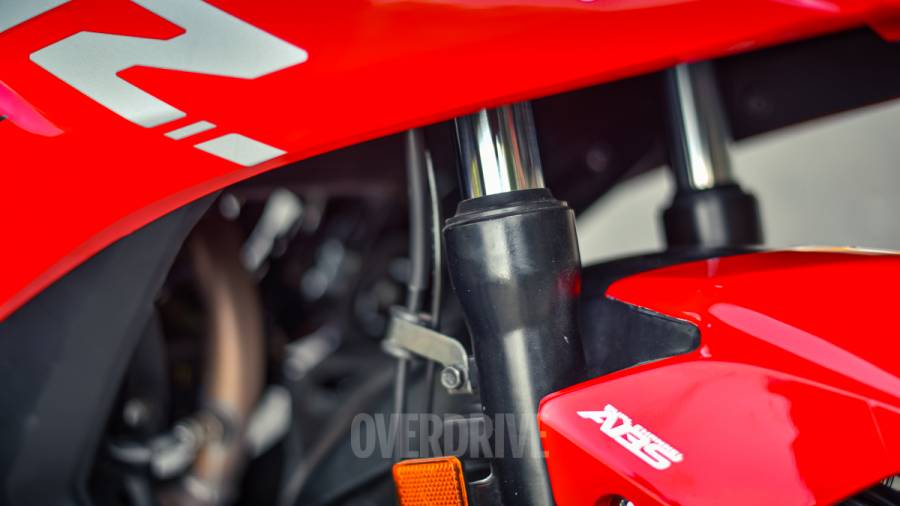
The 37mm forks look like straws, but do their job well of maintaining composure around the bends. It is complemented further by broad tyre choices compared to the competition. Out of the box, the XMR tips in quick and takes on bends quite well, but for sportier riding, I would definitely swap those MRF Zappers for stickier rubber - and the 17-inch wheel diameter opens up a lot of options to that end.
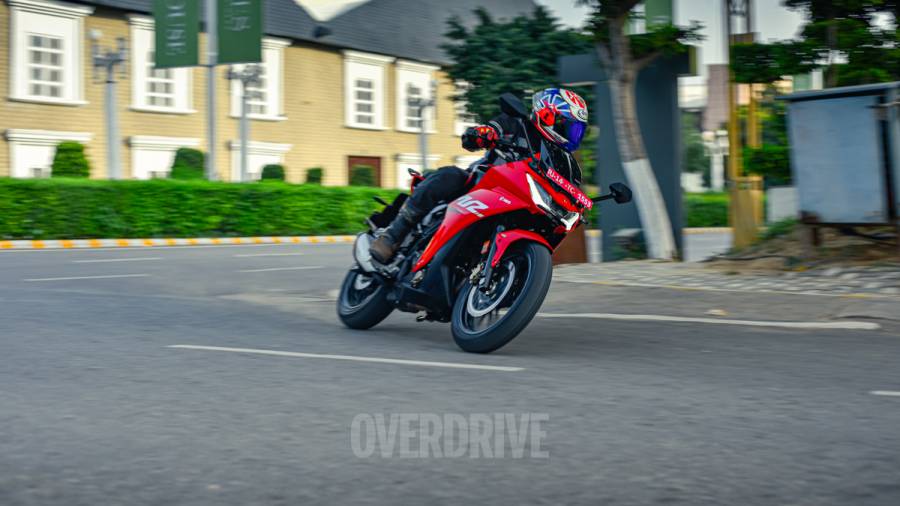
The trade-off for the relatively more aggressive riding posture of the motorcycle is also a firmer suspension setup fore and aft, compared to the original Karizma - which felt quite squishy and unstable around bends. The XMR feels a lot more polished in that sense and offers a much better front-end feel. It may not feel as sharp as the KTM RC200 or the Yamaha R15, but it will do a much better job of commuting through the city, taking you comfortably on the highway to the two-and-a-half race tracks in the country and then letting you have some fun on the track too!
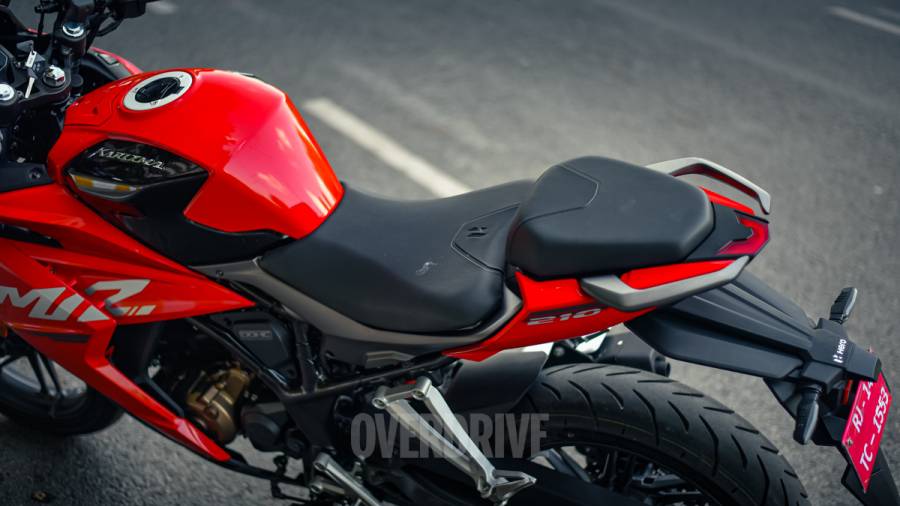
The low-speed ride over poor road conditions feels a bit unsettling, but the suspension feels more supple as the speeds rise. There is no traction control like some of its rivals, but even on the dusty and some of the wet roads in Delhi, I never felt the need for it. But more safety features are always welcome. The brakes get dual channel ABS, but the brake lever feel is spongy. They are still far more confident than the 20-year-old Karizma but do need a firm braking effort.
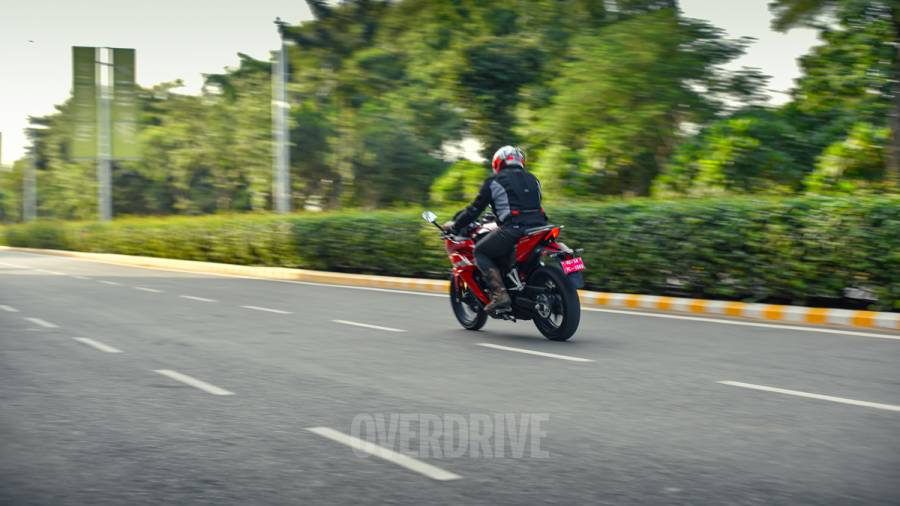
Engine and performance
The engine is lower in capacity than older the Karizmas but is technically more superior with its 4V DOHC specification. It also has liquid cooling, which works just as intended in some of the traffic jams of Delhi that was I stuck in after our shooting was over. The exposed frame doesn't heat up too much either and the overall ventilation for the fairing is well designed.
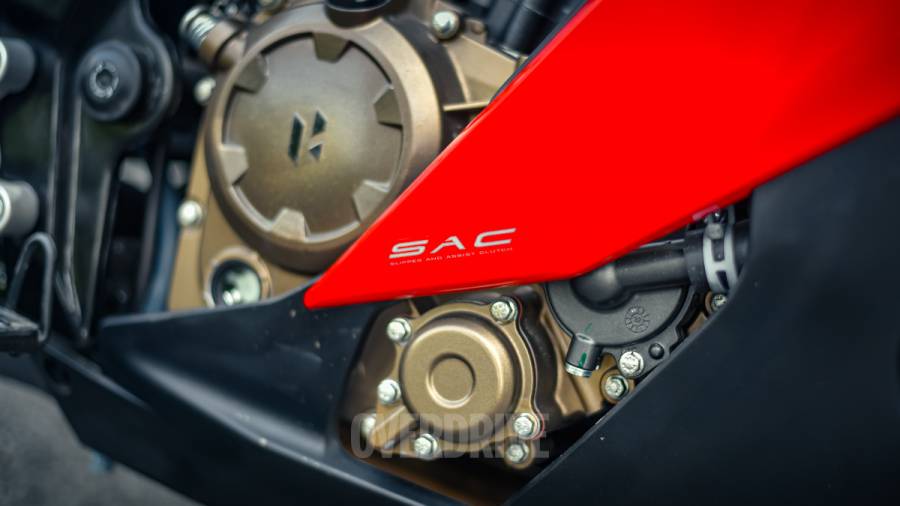
Hero is claiming best-in-class power and torque figures, but take that with a pinch of salt. The XMR certainly has better power and torque than the R15 or the RC200, but the Gixxer 250 SF, which is only marginally more expensive, has marginally better power and torque too. That said, the XMR's engine feels punchy! You can be in third or fourth gear for most of your commutes and still pull overtakes easily. Overtakes at triple-digit speeds feel breezy too. The throttle response is crisp, but I would have liked a lighter clutch effort from this six-speed gearbox.
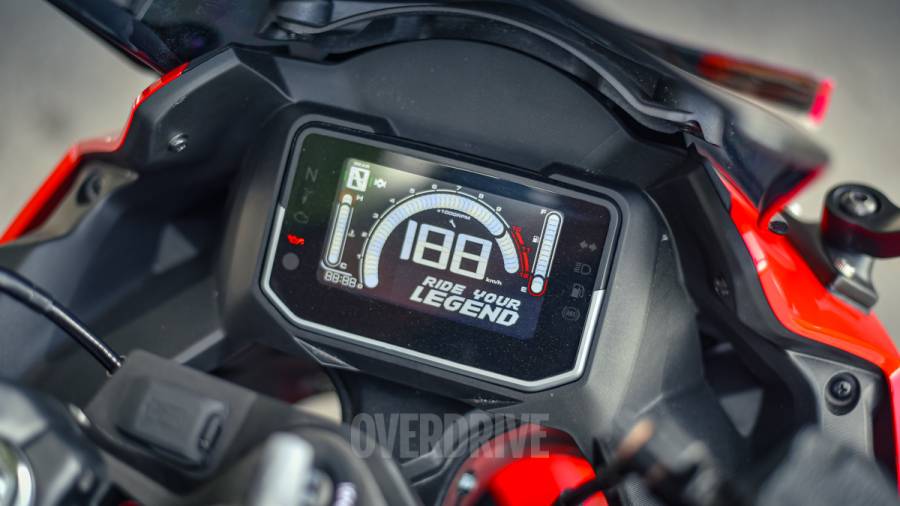
We couldn't push the bike beyond 120kmph (speedo indicated) given the road conditions, but the engine felt like it would do more. It doesn't feel as refined as the Gixxer 250 SF, but the vibrations are felt only beyond 8,000 rpm. So in terms of the performance too, sport touring and sport riding should be a rewarding experience on this compact 200cc motorcycle.
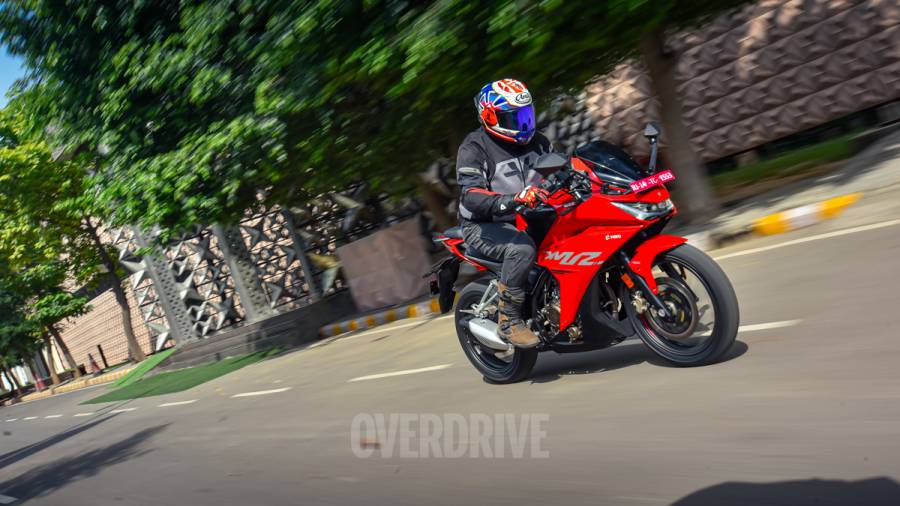
With that compact size also comes a compact 11l tank and with my fuel economy estimates, I think a 350-360km real-world range should be doable on this bike, which isn't too bad. The high-compression engine is likely to demand high-octane petrol, but otherwise, a fuel-efficient, liquid-cooled engine like this one should provide an excellent platform for touring. I won't be surprised if Hero actually churns out a more relaxed touring machine on this platform just like the original Karizma - in fact, they definitely should - a Karizma XMT, maybe?
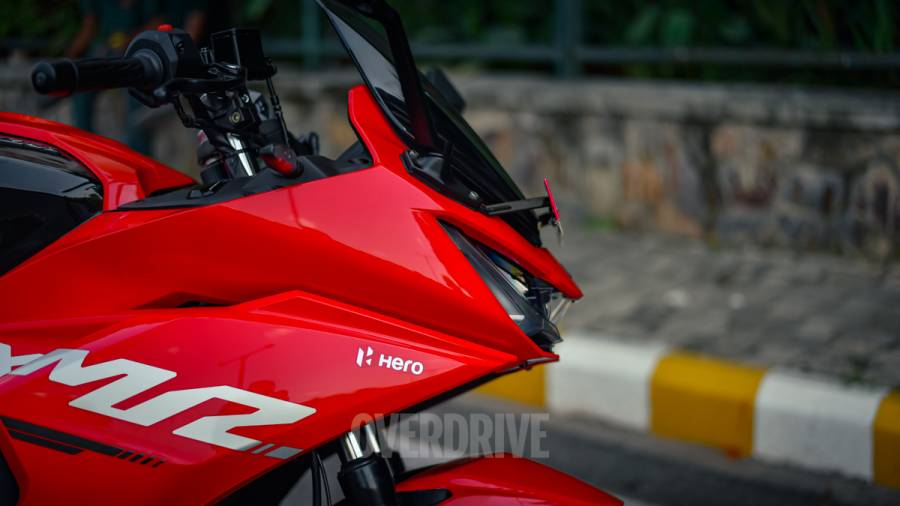
Verdict
To sum it up - the new Karizma XMR doesn't blow me away, the original did back in 2003 and we could blame that on the number of options available today versus twenty years ago. Maybe for someone like me who has a rich love story with the original, the new one feels like a completely different breed of motorcycle. It isn't the thrilling sports tourer that the original was. In today's times, I would have liked the Karizma to be at least 250cc, but ideally a 400cc. But that would also push it into a more premium and less versatile category. Most people walking into the Hero dealerships may not have any preconceived expectations from the Karizma nameplate. They would most likely draw comparisons with the likes of the R15 and the Gixxer 250 SF instead, and from that perspective, the new Karizma XMR is definitely a winner - it has enough tech and standout features, oomph in the styling and punch in its motor to make it an all-rounder for the target audience. And after all, an all-rounder is what a Karizma should be, and the XMR delivers on that promise.
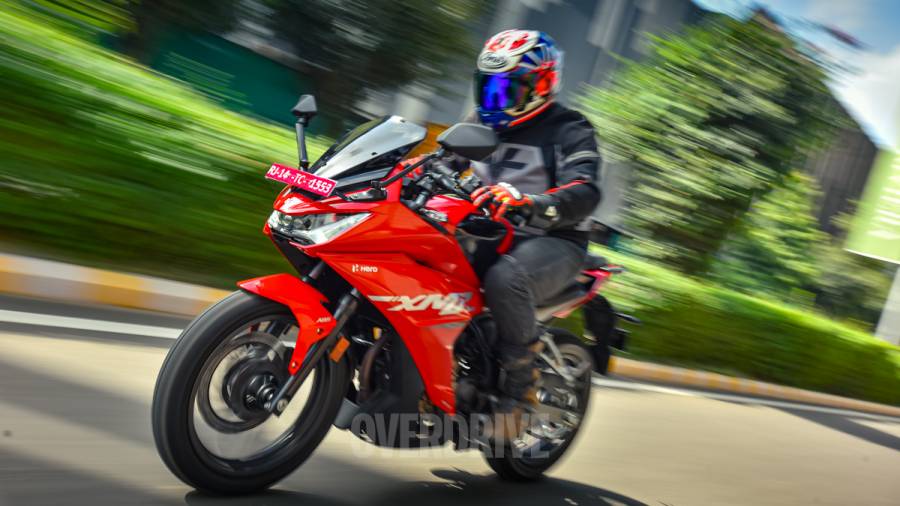
Words Rohit Paradkar
Photography Anis Shaikh
Starts Rs 58,400
109cc
4-Speed
9.40
9.00
-NA-
Starts Rs 1,02,700
149cc
5-Speed
12.40
13.60
-NA-
Related Stories
Top Stories
Latest Videos
Most Popular
- Budget Sportbike Showdown: Kawasaki Ninja 500 vs Aprilia RS 457 vs Yamaha YZF-R3
- 2014 Triumph Daytona 675 vs 2024 Kawasaki ZX6R - A Decade of Evolution in Supersport Motorcycles
- Mumbai-Pune Expressway speed restrictions updated
- Nissan Magnite EZ-Shift review - is the AMT any good?
- Nitin Gadkari states that tax on Hybrids should be reduced to 12 percent in the coming future
